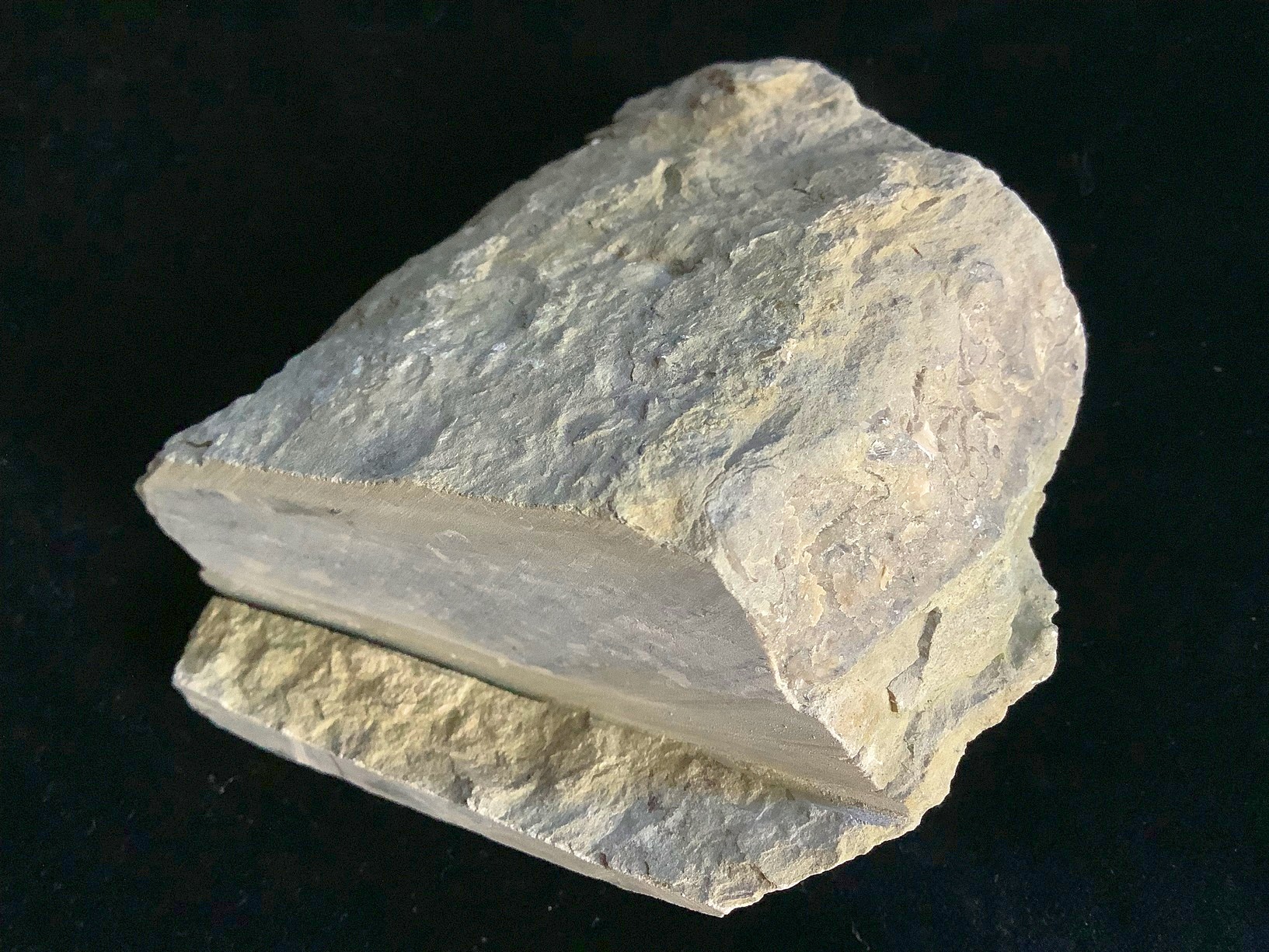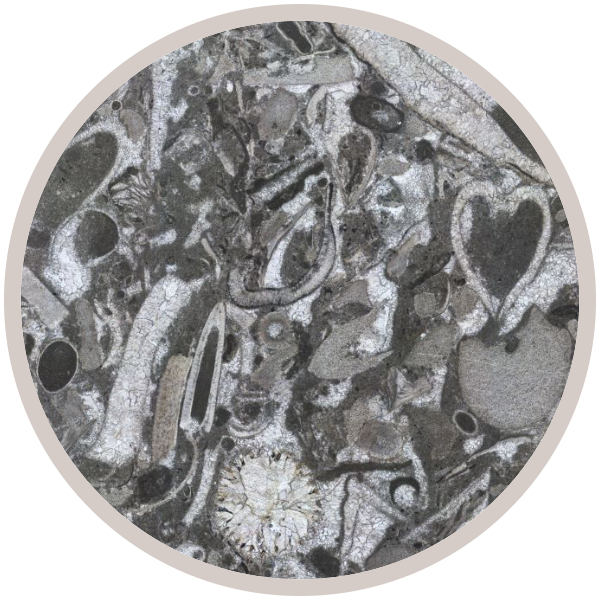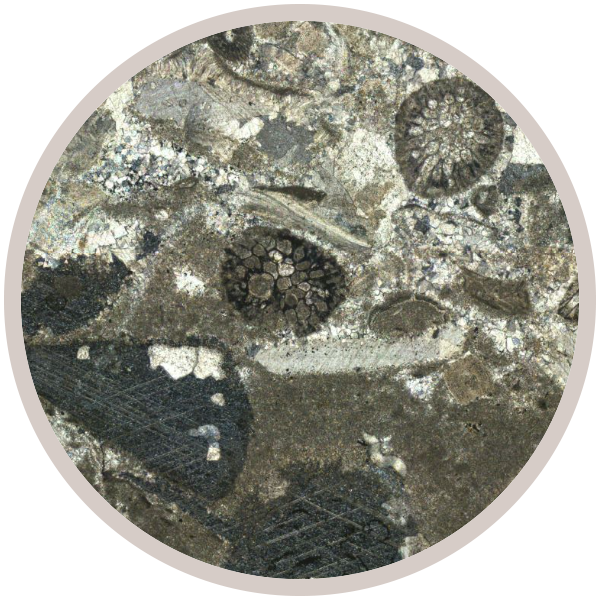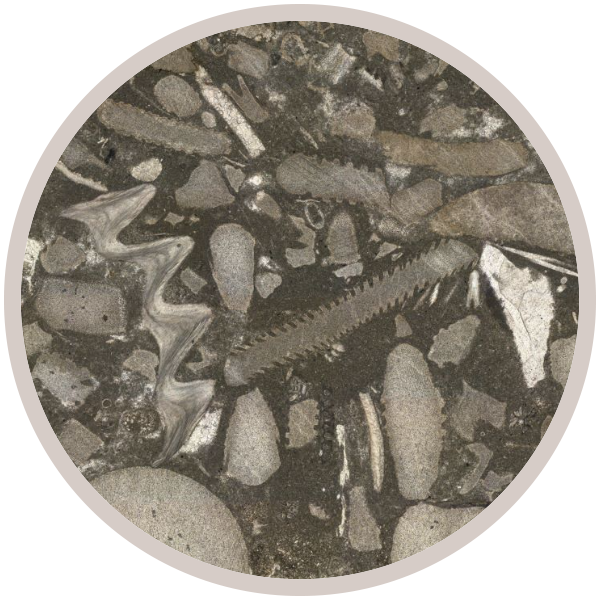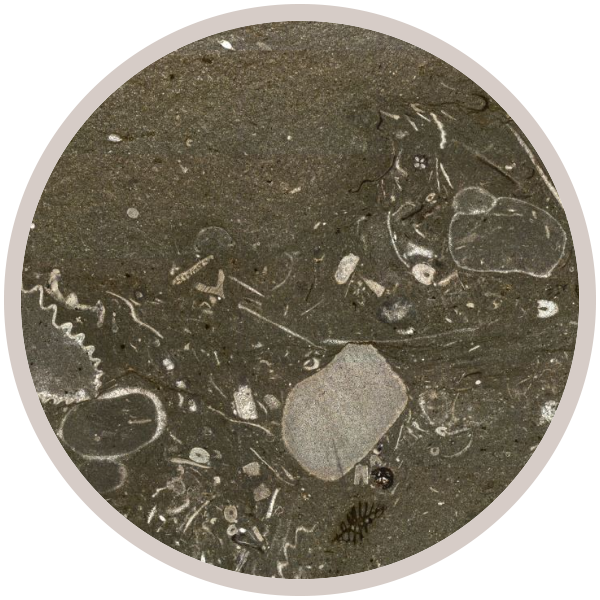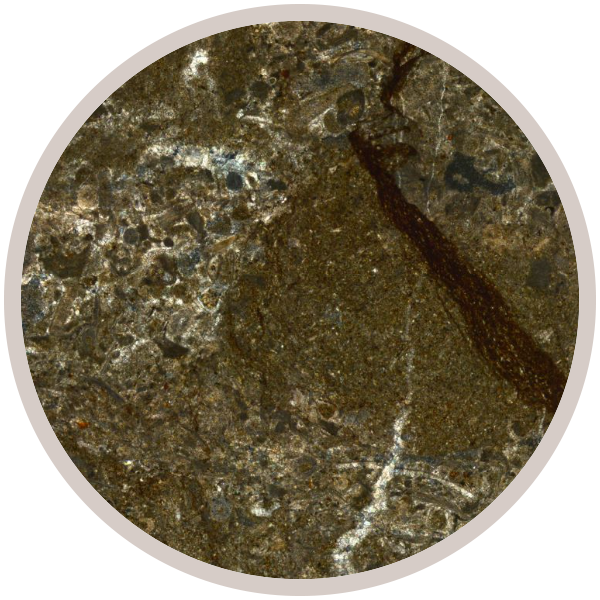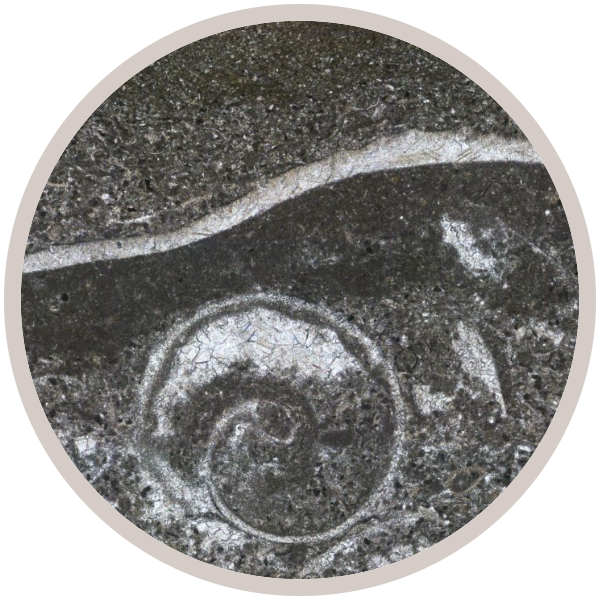
Fact sheet
Fossiliferous Silurian limestone of Wenlock age with greenish-grey clay-rich layers. The central layer in this thin section is packed with bioclasts in a mixed micrite and sparite groundmass. This layer is sandwiched between two dark brown layers of fine-grained micrite with sparse bioclasts. This sample was collected from near the reef mounds at Wren's Nest.
The limestone was laid down in a shallow tropical sea south of the equator around 428 million years ago. The area of Wren's Nest featured small coral reefs teeming with life, separated by shallow banks and troughs of lime mud. This sample was likely deposited fairly near a reef, with periodic influxes of shelly material interspersed with quieter periods of micrite accumulation.
The limestone reefs nearby were home to compound and solitary corals, bryozoans, crinoids, brachiopods, gastropods, cephalopods and trilobites. Bioclasts in the central shelly layer include fibrous and ribbed brachiopod shells, gastropods, echinoderm plates and crinoid stems, corals, bryozoans. The margins of the shelly layer roughly match the palaeohorizontal, and a few shells half-filled with micrite (geopetal structures) confirm this - though the prominent bivalved shell above centre seems to have been tilted to the right.
The close-knit groundmass of sparite and micrite in the shelly layer makes the shelly fragments difficult to pick out in this sample.
This sample was collected as part of the 'Macro to Micro' project.
This Collection showcases the geodiversity of a classic geological site: the Wren's Nest National Nature Reserve in the West Midlands.
As well as displaying thin section and hand specimen views along with information setting them in the context of their landscapes, we also include perspectives and creative responses to the geological heritage of the sites from the local community.
| Explore the stories of the rock layers at Saltwells and Wren's Nest NNRs, designed by students at King Edward VI School, Stourbridge: |
This Collection was made possible by funding awarded to the 'Macro to Micro' project by the Natural Environment Research Council (NERC) under their 'Growing Roots' scheme.
